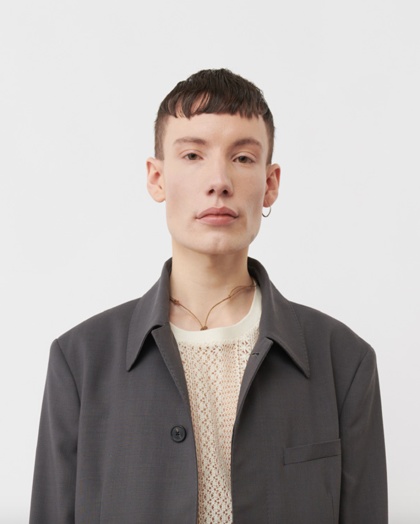Erik Thörnqvist
Big science small country
What. Artist in Residence
When. October 2020
Where. Kiruna/Luleå
Organizers. Luleå Biennial and Resurscentrum för konst in collaboration with KKV Luleå and Kiruna Municipality
Who. Erik Thörnqvist (b. 1994) is an artist based in Luleå and Stockholm.
Website. erikthornqvist.com
Our sense of spatial orientation has changed considerably in recent years, prompted by new surveillance technology. One effect is the increasing demand for satellite and aerial perspectives. We have grown accustomed to a divine gaze while the line perspective diminishes in relevance. The stable singular gaze has been replaced by multiple perspectives, overlapping windows and distorted points.
News regarding the space research station Esrange naturally tends to be reported in abstract and sweeping terms, often accompanied by dwindling assumptions about grand narratives of global influence. In a desire directed upward at new yet untouched resources and unknown things.
In the work ‘Big science small country', Erik Thörnqvist returns to the road his grandfather built in connection with the construction of Esrange space station. North of Övre Soppero with the exit from route E45, the gravel road winds even farther north into Crash zone B, the area where potential space debris could decline from the sky in to Sapmi. There are 21 shelters in the area, where warnings are broadcast by radio in five languages. Infrastructure guarantees the possibility of something, a way for us to move forward, and on the other hand its effect is extremely unpredictable. Infrastructure is looking to the future. But is built in the present, on top of the past.
At the intersection of the x and y axis, the lines meet in origin.
When the line for time has been obscured, we follow a path distorted and crooked. Corruption in memory opens up an alternative reality, where we can float away and then fall into infinity.
Erik works with different fictional, historic, collective and personal references to explore affective conditions, labour and how bodies define space. Erik uses a visual vocabulary that addresses time as well as space – a fictional and experiential universe that only emerges bit by bit.
His installations are an investigation of concepts such as authenticity and objectivity by using an encyclopaedic approach and quasi-scientific precision and by referencing documentaries, ‘fact-fiction’ and popular scientific equivalents. By merging several seemingly incompatible worlds into a new universe.
The possibility or the dream of the annulment of a (historically or socially) fixed identity is a constant focal point. By demonstrating the omnipresent lingering of a ‘corporate world’, he reflects on the closely related subjects of archive and memory. This often results in an examination of both the human need for conclusive stories and the question whether anecdotes fictionalise history. It challenges the binaries we continually reconstruct between Self and Other, between our own cannibal and civilized selves.
Erik Thörnqvist currently lives and works between Stockholm and Luleå.

